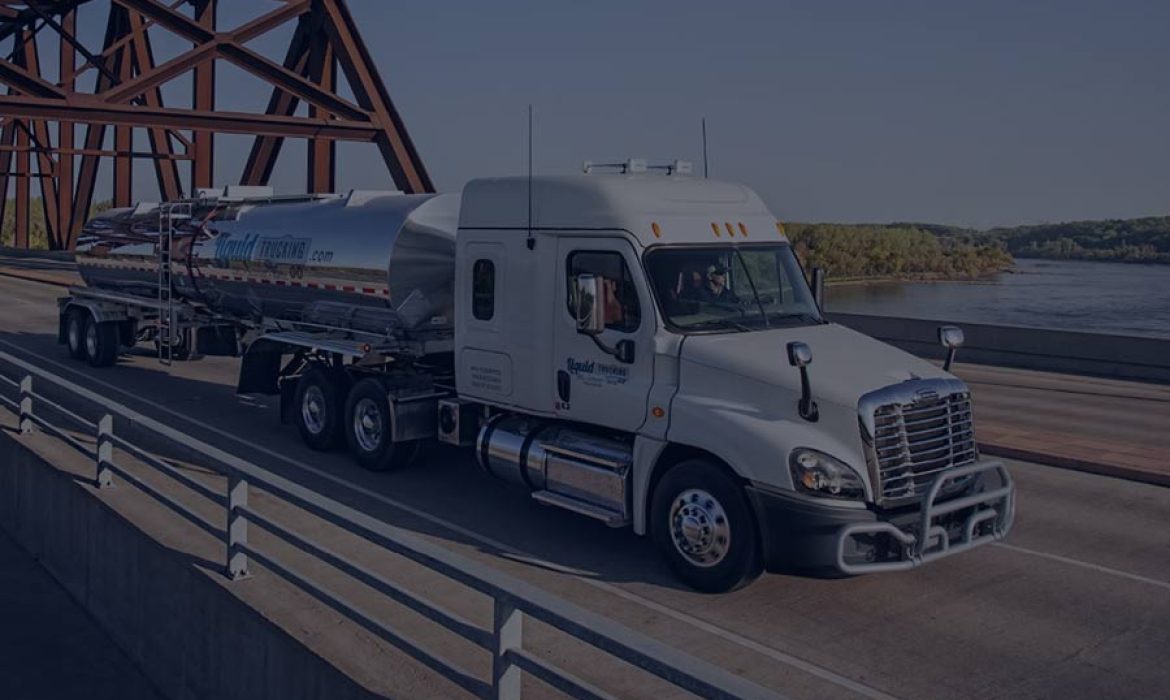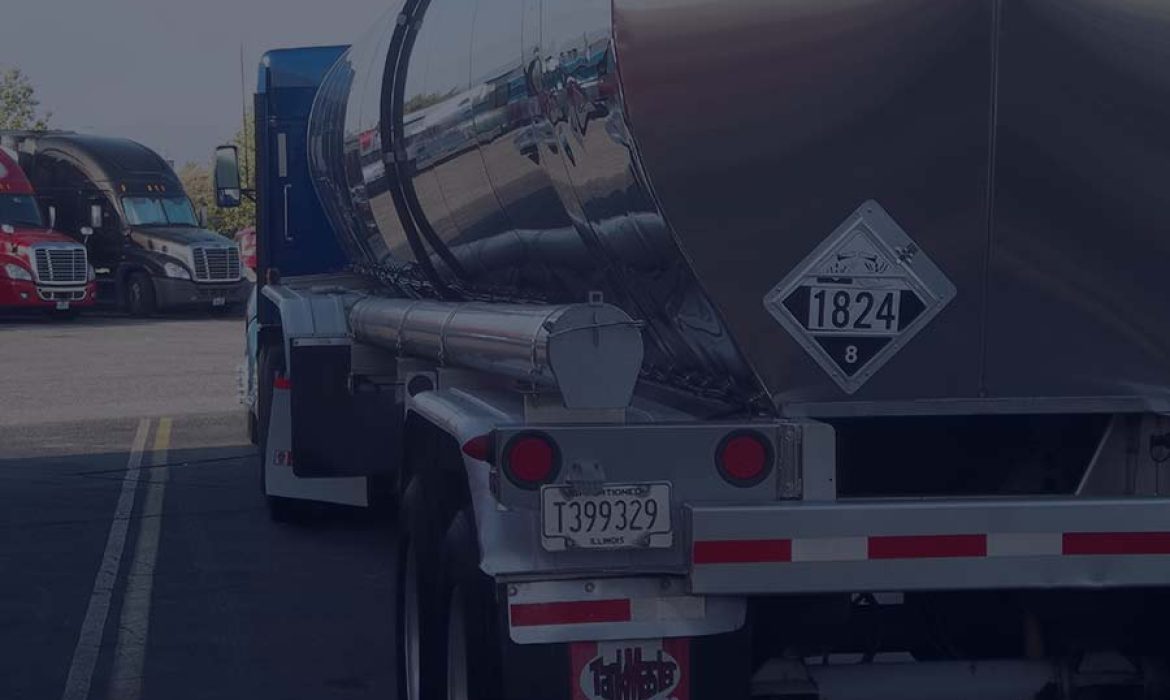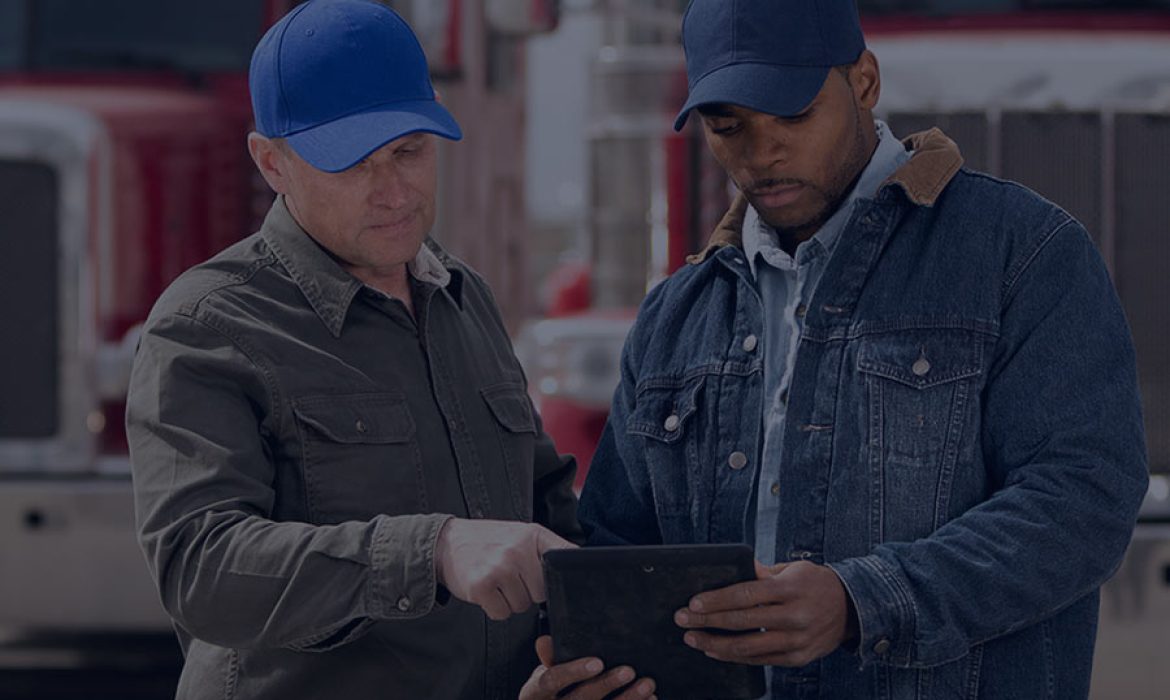TANKER ENDORSEMENT: HOW TO GET IT ALL YOU NEED TO KNOW [UPDATED 2023]
ALL YOU NEED TO KNOW ABOUT TANKER ENDORSEMENT and HOW TO OBTAIN IT [Updated 2023
The tanker endorsement is a crucial addition to a CDL that allows drivers to operate vehicles designed to transport liquids or gases. In this blog post, we will discuss when a tanker CDL endorsement is required, its benefits, and the steps needed to obtain it.
When is a tanker CDL endorsement required?
A tanker CDL endorsement (N) is necessary for drivers who operate commercial vehicles designed to carry liquid or gaseous freight in bulk. This includes but is not limited to, fuel and water tankers. As well as vehicles transporting hazardous materials, which may require an additional HAZMAT endorsement (H).
How many gallons require a tanker endorsement?
A tanker endorsement (N) is required when the vehicle’s cargo tank has a capacity of 1,000 gallons or more. Or if the vehicle is transporting multiple smaller tanks, each with a capacity of 119 gallons or more, that totals 1,000 gallons or more.
What Can Be Transported With (N)
Drivers with this endorsement often haul liquid, food-grade materials such as:
- Water.
- Milk.
- Juice.
- Liquid sugar.
- Vegetable oil.
- Vinegar.
To transport hazardous materials, like gasoline or propane, drivers need an additional HazMat endorsement. Dry bulk freight, like plastic and wooden pellets, flour, or grain, does not require a tanker endorsement.
Are Tanker Endorsements and HazMat Endorsements the Same?
Tanker and HazMat endorsements are not the same, although they often overlap in job requirements. Tanker endorsements pertain to the volume being transported, while HazMat endorsements concern the type of material being hauled.
HazMat endorsements enable drivers to transport hazardous materials, such as:
Toxic chemicals. Fuels. Nuclear waste. Flammable liquids and gases. Drivers hauling hazardous materials like gasoline or propane in volumes over 1,000 pounds need both tanker and HazMat endorsements.
A combination endorsement, designated by the letter “X,” covers both tanker and HazMat qualifications. This does not require drivers to transport hazardous materials but provides the option to do so.
Benefits of obtaining a tanker CDL endorsement
There are several benefits, including:
a. Expanded job opportunities: You can access a broader range of job opportunities in the trucking industry. As you will be qualified to transport various types of liquid and gaseous materials.
b. Increased earning potential: You will generally earn a higher salary compared to jobs without the endorsement ie. dry van, reefer or even in some cases flatbed.
c. Enhanced safety and responsibility: It demonstrates a commitment to safety and ensures that you are knowledgeable about handling and transporting hazardous materials safely.
What are the Requirements?
To obtain this endorsement for a CDL, drivers must:
Be at least 18 years old.
Possess a valid U.S. passport or valid residential status.
Hold a valid CDL before applying.
Pass an eye exam and have a photo taken at the DMV.
Pay registration and training fees.
Study enough to pass the knowledge test.
If obtaining a HazMat endorsement or a combination (“X”) endorsement, additional training, certification, and a TSA background check are required.
How to obtain a tanker CDL endorsement
Follow these steps to obtain a tanker CDL endorsement:
1. Hold a valid CDL: Before one can apply for this endorsement, he or she must possess a valid CDL (Class A or B) issued in their state of residence.
2. Study for the test: Drivers need to study the state’s CDL manual to prepare for the tanker endorsement test. The manual covers essential topics such as inspecting and operating tanker vehicles, safe driving techniques, and handling emergencies.
3. Pass the written test: Test consists of 20 multiple-choice questions, with a passing score of 80% or higher required. The test covers topics like tank vehicle inspection, safe driving techniques, and emergency procedures. Just like CDL practice test, keep practicing and you will ace it.
4. Complete a background check (if necessary): If the tanker vehicle will also transport hazardous materials, drivers must obtain a HAZMAT endorsement. This process requires passing a separate written test and a Transportation Security Administration (TSA) background check.
Consequences Of Not Obeying The Law
According to FMCSA Section 383.53, if commercial drivers operating without the necessary endorsement are caught even if the cargo fulfills the regulatory criteria, they may face a penalty of up to $5,000 per incident. As well as license suspension for 90 days.
On top of that, you’re supposed to check your vehicles for leaks since they will not spare you if they find any when inspecting your vehicle at a random stop.
CONCLUSION
Having tanker (N) on your CDL opens up a world of opportunities for commercial drivers. By allowing them to transport liquid or gaseous freight. By understanding when this endorsement is required and following the necessary steps to obtain it, drivers can expand their job prospects and increase their earning potential in the trucking industry. Always remember that safety is paramount when operating a tanker vehicle, and acquiring the proper endorsements demonstrates a commitment to responsible and secure transportation.
You May Also Like
Keep your mental and physical health in shape, stay safe and keep trucking!
If you want to learn more about N endorsement visit Truckers.Wiki article
Commercial Driver License (CDL) and its Restrictions
If you want to advance your career as a truck driver, there are a few things that you need to know before you continue hauling heavyweights. And for that to happen, you must earn your CDL license and avoid getting CDL restrictions that could hinder or take away your earning potential.
These restrictions are set in place not to intervene with a person’s driving but make them better drivers. Keep on reading to find out more about how these restrictions work.
CDL Classes and Their Types
There are three classes of CDL that allow you to operate a Commercial Motor Vehicle Legally.
You can visit Truckers.Wiki to learn more about CDL.
Class A
Holding a class A CDL will enable you to drive a vehicle that can carry up to 26,001 pounds, for example, tank vehicles, semi-trucks, trucks, tractors, buses, etc. So, as a driver, you can haul anything from liquids to towed cars falling within a Gross Vehicle Weight Rating of 10,000 lbs.
Class B
Holding a class B CDL allows you to operate a vehicle that can carry up to 26,001 in gross weight rating. When the commercial vehicle is used for towing or hauling liquids, it must not exceed 10,000 lbs. You can operate flat trucks, passenger or school buses, segmented buses, delivery trucks, dump trucks, etc.
Class C
Those truck drivers who want to operate a commercial vehicle with a GVWR of lesser than 26,001 pounds, or a passenger vehicle with 16 or more passengers, you’ll need a Class C license.
Class C CDL holders with the appropriate endorsements can operate small hazmat vehicles and passenger vans, trailers.
List Of Restrictions:
With DL regulations in place, certain types of commercial Motor Vehicles cannot operate.
Alright, now lets take a look at the list of restrictions:
E Restriction
It is illegal for truck drivers to drive around while using manual air brake gear. If they take the exam with automatic transmission (gearset), they will likely receive an E restriction.
L Restriction
An L restriction will be issued to the driver if the air brakes systems are not adequately tested or cannot be recognized. When drivers fail to pass the air brakes test, they are susceptible to an L restriction.
M Restriction
The M restriction applies only to class B or C vehicles, such as public transportation and school buses. This restriction is given when a driver has a class A CDL but still receives their P endorsement (passenger endorsement) or when they have been given a class B vehicle but have an endorsement (School bus endorsement).
N Restriction
Drivers of Class C vehicles and buses are subject to this restriction. This restriction is imposed when a Class B CDL driver acquires either an endorsement (school bus endorsement) or a p endorsement (passenger endorsement) for a class C vehicle.
O Restriction
The O restriction is issued when a fifth-wheel connection vehicle is driven by the driver taking the test in a class A car without a fifth-wheel connection.
V Restriction
The FMCSA (Federal Motor Carrier Safety Administration) issues a V restriction on a driver who has a medical condition. This might involve various diseases and underlying conditions such as diabetes, seizures, poor vision, and hearing loss.
Z Restriction
Z restriction is imposed on a driver who fails to take a hydraulic braking system test. Individuals are not licensed to drive a Commercial Motor Vehicle equipped with air brakes under the Z restriction.
Takeaway
You might obtain CDL restrictions in the same way your CDL endorsements allow you access to different vehicle types and loads. The restrictions on your CDL regulate the vehicles you can operate.
You May Also Like
How To Get Hazardous Endorsement HAZMAT 2022
Keep your mental and physical health in shape, stay safe and keep trucking!
How to Land Your First Job as a Truck Driver
If you’re looking for a career that offers plenty of opportunities for growth and travel, truck driving may be the perfect choice for you. However, to land these desirable truck driver jobs, you’ll need to demonstrate that you have the skills and experience required to do the job safely and efficiently. Here are a few tips that can help you land your first trucking job.
Get the required education
Enroll in a truck driving school that offers CDL (Commercial Driver’s License) certification training. This is the best way to get your career started on the right path. You can enroll directly through some truck driving companies or through an independent training school. Here you’ll learn the basics of truck driving, passenger transport, and hazardous materials handling.
Experience, Experience, Experience
You will be asked this a lot. In order to prove that you have the skills required for a trucking career, you’ll need to get some experience behind the wheel. Most trucking companies will require at least two years of experience driving a commercial vehicle before they’ll consider hiring you. You can get this experience by finding bigger companies as they accept fresh grads for their OTR jobs.
Get Endorsements
Endorsements are another way to prove that you’re qualified for a career in truck driving. There are several endorsements available, including the transportation of hazardous materials and tanker operations.
Network
Networking is an essential part of any job search, and the trucking industry is no exception. Get in touch with people who work in the trucking industry, attend trucking events, or join online forums and discussion groups related to truck driving. There’s no better way to learn about job openings and the requirements for landing a job in trucking than by networking with people who are already in the industry.
Visit Job Boards & Submit Applications
Job boards are an excellent source for finding trucking jobs. You can find postings on company websites, online job search databases, and recruitment sites. When you find a job opening that you’re interested in, fill up the application form. Make sure your application is tailored to the specific job type (such as OTR or Regional, trailer type – van or reefer) you’re applying for, and be sure to list any endorsements or experience you have that is relevant to the job.
Social Media & Chats
Since many people in the trucking industry are active on social media sites like LinkedIn, Facebook, and Twitter, it can be a wise move to join these social networks. Joining online groups related to truck driving is another way to network with other drivers, learn about the industry, and find job openings.
Visit Companies Directly
Another good way to find openings is to visit companies directly and ask about hiring opportunities. If you’re already familiar with the industry, you can mention the specific type of trucking job you’re interested in.
Takeaway
Finding your first job in truck driving may not be easy, but it’s worth the effort. Persevere, and don’t give up until you’ve found the right opportunity. With the right skills and experience, you’ll be on your way to a successful career in truck driving.
You May Also Like
How To Get Hazardous Material Endorsement on Your CDL
Today we dive into the endorsements, specifically Hazardous Materials. Let’s see which steps you need to take to get this endorsement on your CDL.
What is hazardous materials endorsement?
This endorsement will allow you to transport hazardous materials, from hair sprays to dynamite and all the dangerous liquids such as gasoline or dangerous gas loads.
How to get hazmat?
Getting the hazardous materials endorsement or hazmat is a two step process. Of course you need to have a CDL license. If you are currently in the process of getting your CDL you can also go through obtaining hazmat as well, however if you have no driving experience it is very unlikely that you will get any hazmat work.
First Step
Go to your local DMV and purchase the permit. The cost varies depending on which state you are in, but all in all it shouldn’t cost more than $100.
Second Step
Pass your hazmat written exam. To pass the exam you should study from the CDL manual of your home state which gets updated every few years. Be serious about it and study hard.
And voila, you’ve got yourself a hazardous material endorsement.
Note that you will have to renew your hazmat endorsement everytime you renew your license.
However if you chose to drive these types of loads your income will be a lot higher than regular loads work.
Also,it is important to note that if you are a fresh outta school driver, you won’t really be able to get any hazmat work before you get at least 2 to 3 years of driving experience.
You May Also Like
How Much Do Truck Drivers Make 2022
Keep your mental and physical health in shape, stay safe and keep trucking!
Learn more about the H Endorsement on Truckers Wiki.
3 Key Points to Driver Recruiting
Driver recruiting is not an easy task, especially these days. You’ve already heard about it, there’s a driver shortage in America. If you’re a company that has been lucky enough to continuously keep your fleet on the road, then congratulations! But if you are like many other recruiters we’ve spoken to in the transportation industry, you’ve probably had an issue finding quality candidates.
To help you increase your chances with recruiting we’ve written these 3 points that your recruiters should keep in mind.
Get Leads In Real Time
For some time now it has been possible to get leads in real-time. This means that you can see the leads available immediately when they are available in the driver recruiting system that you use. This instant access to leads is very helpful in ensuring that you do not lose out on leads along the way. With real-time leads, you have a higher chance of converting.
Harvard Business research tells us if you contact your lead within 5 minutes of their application you are about ten times more likely to get them in a truck. You are also able to access leads anytime of the day meaning that you never miss out on any potential conversions. Our agency suggests using EagleRMS as it is more powerful than its competitors, yet free.
Get Exclusive Leads
Another great practice is getting exclusive leads. Usually when leads are generated by sourcing agencies they are sold to more than one company and usually to about five. When you choose to get exclusive leads through job boards, marketing or social media, you are sure to get the leads that your competition doesn’t have. This gives you the edge you need over the market competition in driver recruiting to get from lead to hired driver.
Exclusive leads are usually very high quality and therefore worth your money. Our market research shows that a single lead is currently worth from $45 to $70, compared to $25 to $50 in 2019; depending on what driver profile you’re looking for.
Getting exclusive leads you’ll be able to reach the best potential candidates based on any demographics you could have ie. employment type, years of experience, type of haul, type of trailer and so much more. For example if you are looking for OTR drivers you will be the only one receiving those exclusive leads as they come in, meaning higher chances of getting the right driver.
Immediately Follow Up On Your Leads
The biggest mistake any recruiter can make with leads is letting them go cold. After you’ve received the exclusive lead in real time you should follow up with them immediately. This gives you an enormously higher chance of going from lead to driver in your fleet.
As indicated above, the chances of converting a lead to a driver drop after the first five minutes, of course don’t be discouraged by this fact but do keep a practice of your recruiters reaching out AS SOON AS POSSIBLE. Having a large number of leads coming in can affect how soon you are able to contact them. Having many leads is not helpful if you are not able to reach out and start processing them into drivers quickly, so make sure that you manage your resources accordingly.
Conclusion
With these 3 points you will not only get high quality leads but also great drivers that will fit into your fleet perfectly.
If your recruiting department is having hard times or you are lacking one, reach out to us and let’s get your trucks on the road.
Keep your mental and physical health in shape, stay safe and keep trucking!
Looking to hire drivers? Click here and join our family.
W2 vs. 1099 The Difference: Truck Driver Guide
Being a truck driver recruiting agency (amongst working with other talents in trucking such as mechanics, safety, accountants etc.) often we are asked what are the differences between W2 and 1099 for truck drivers.
Buckle up as it’s time to address the topic and list out the major differences between W2 and 1099 employment.
What is a W2 employee?
This [W2] represents a driving job with a set salary and in trucking, with a W2 usually a company driver with a steady paycheck that is based on a contractual wage. This wage is subject to applicable federal and state taxes.
Unlike other industries, W2 in trucking allows the driver to have more control over the working hours, however the employer determines your on and off days.
As a W2 truck driver your employer will take all of these settings in consideration as you are their employee and they are responsible for deducting taxes from your paycheck.
W2 Benefits for Truck Driver
Tax Administration
Being a W2 employee, you don’t have to worry about tax deductions from your paycheck, which saves a lot of time and headache when the tax season hits.
Employment Benefits
Working as a W2 truck driver you receive company benefits, they do however depend on what the company offers. Some will provide you with medical, vision and dental insurance while others may also offer 401k and paid vacation. What a dream job right?
Job Stability and Security
W2 does offer a more secure and stable job compared to independent contractors with a 1099 employment. In certain cases, you can also count on consistent income even when there is no work for you, depending on how your pay is structured. For example, if you are contractually paid by the hour and not by the mile, and there is no load to drive, you still get that sweet deposit on Friday.
Legal Rights
Driving a truck as a W2 employee gives you better legal rights compared to independent contractors. For example, truckers in California have a right to fair wages, safe workspace, redundancy payments and much more. Some of these depend on the state where you are employed, but in general, you have better protection than 1099 employees.
The Downsides on W2 Employment
While you can count some serious advantages of W2 employment there are certainly downsides too. Some owner-operators protested the California Assembly Bill 5 that was pushing 1099 classified truckers to W2 employees. Let’s take a look at some W2 downsides.
Lower Pay
W2 truck drivers get employment benefits, job security and all the advantages we stated above, however, W2 truck drivers are usually paid lower hourly or per mile based wages than independent contractors classified under 1099 who can negotiate and set their own salaries.
Less Control Over Job
One of the bigger factors in the difference between W2 and 1099 is the fact that W2 drivers have less control over their job. As a W2 employee, your employer will decide what loads you drive, which route to take and how long you stay on the road.
What is a 1099 independent contractor worker?
Working under 1099 classifieds you as an independent contractors, meaning you are working for yourself rather than an employer. Simply stated – truck drivers think of 1099 as owning their own business and choose contract work over permanent employment.
A 1099 worker, unlike W2 employee, you are not considered a company employee resulting in you having more control over how you work and what job you accept.
Flexibility
Choose how many miles or hours you want to drive, your days on and off the road. Pick loads and routes and set your own prices and rates. Ten ninety-nine is the type of work that comes with a lot of flexibility.
Higher Earnings
One of the biggest upsides of driving as a 1099 worker is the fact that you will get paid more than W2. Set your own per mile or hourly rate. Think of 1099 as being an entrepreneur and not an employee. There is a potential to earn much more.
Tax Deductions
Ten ninety-nine is considered as self-employment by the IRS, allowing you to claim higher tax deductions compared to W2. Truck repairs, business mileage, meal deductions etc. All tax deductions.
Downsides of 1099?
So now that you know what are the benefits of 1099, let’s take a look at the downsides of 1099.
No Employee Benefits
Working 1099 gets you no benefits a W2 employee would get. No health insurance, retirement benefits, dental etc. You pay for these yourself.
Less Stable Income
No fixed salary, also meaning no work – no salary, you are only paid for the miles or the hours you drive.
Tax Management
You will have to manage all of your finances and taxes, tax withholdings, payments and run your career as a business.
W2 Vs 1099: Which is Better for Truck Drivers
There is no definitive answer and it really depends on more than one factor.
If you are looking for a more stable career to support your family, the fixed but steady salary and benefits W2 could be the better choice for you, not to forget the paid vacation time.
On the other hand if you are starting out or you want to build up a business rather than to be an employee 1099 would be your way.
Some truck drivers start with W2 and switch to 1099 after a while and vice versa. You might find that freedom to pick your time on the road and more pay is better than benefits and vacation.
Put everything down to paper and figure out what’s right for you.
We hope that this was enough information to help you make the right choice.
Keep your mental and physical health in shape, stay safe and keep trucking!
Looking for work? Join Employality today and let us take care of your driving career.





